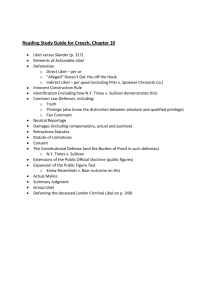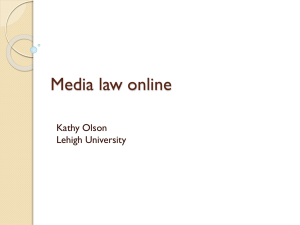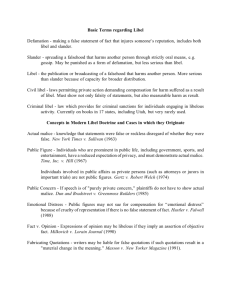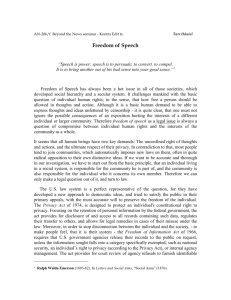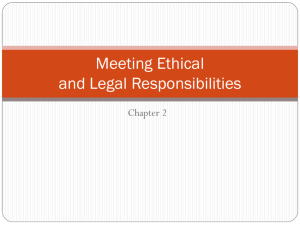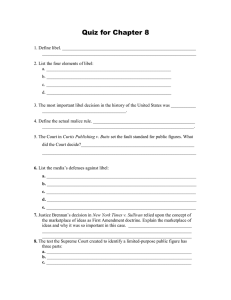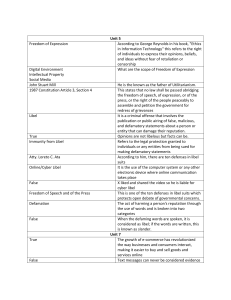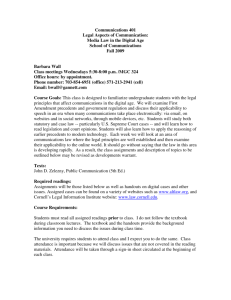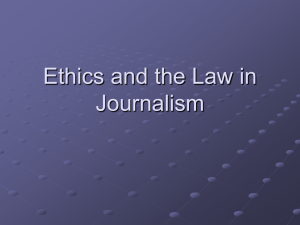Midterm study guide - Free Speech Rocks! -
advertisement
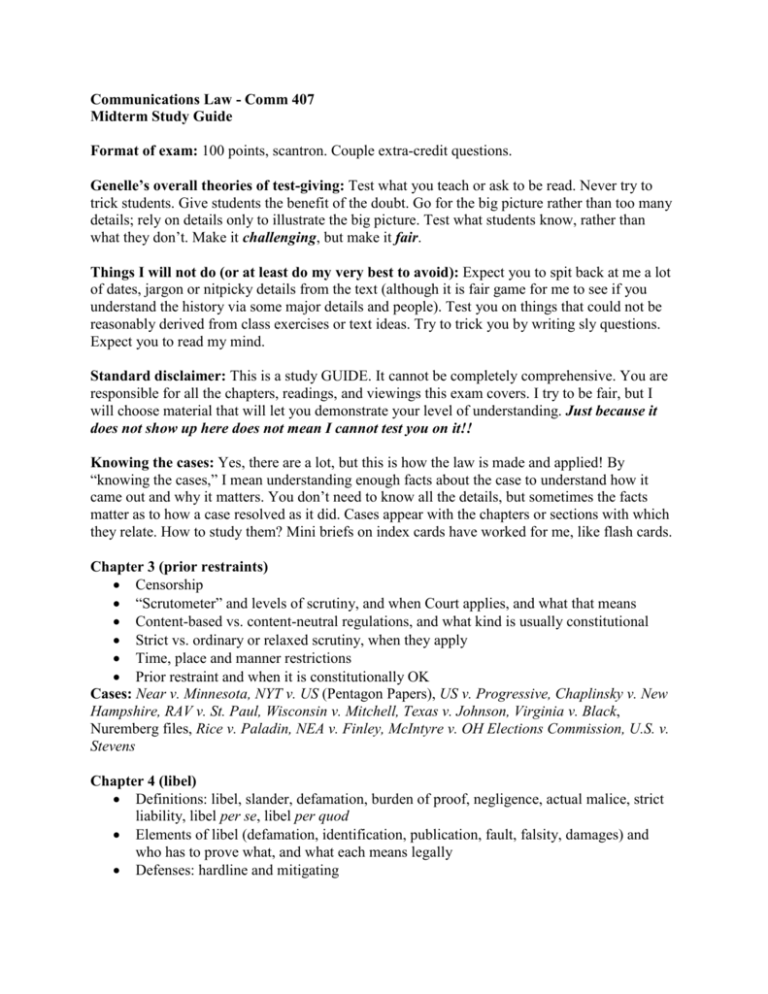
Communications Law - Comm 407 Midterm Study Guide Format of exam: 100 points, scantron. Couple extra-credit questions. Genelle’s overall theories of test-giving: Test what you teach or ask to be read. Never try to trick students. Give students the benefit of the doubt. Go for the big picture rather than too many details; rely on details only to illustrate the big picture. Test what students know, rather than what they don’t. Make it challenging, but make it fair. Things I will not do (or at least do my very best to avoid): Expect you to spit back at me a lot of dates, jargon or nitpicky details from the text (although it is fair game for me to see if you understand the history via some major details and people). Test you on things that could not be reasonably derived from class exercises or text ideas. Try to trick you by writing sly questions. Expect you to read my mind. Standard disclaimer: This is a study GUIDE. It cannot be completely comprehensive. You are responsible for all the chapters, readings, and viewings this exam covers. I try to be fair, but I will choose material that will let you demonstrate your level of understanding. Just because it does not show up here does not mean I cannot test you on it!! Knowing the cases: Yes, there are a lot, but this is how the law is made and applied! By “knowing the cases,” I mean understanding enough facts about the case to understand how it came out and why it matters. You don’t need to know all the details, but sometimes the facts matter as to how a case resolved as it did. Cases appear with the chapters or sections with which they relate. How to study them? Mini briefs on index cards have worked for me, like flash cards. Chapter 3 (prior restraints) Censorship “Scrutometer” and levels of scrutiny, and when Court applies, and what that means Content-based vs. content-neutral regulations, and what kind is usually constitutional Strict vs. ordinary or relaxed scrutiny, when they apply Time, place and manner restrictions Prior restraint and when it is constitutionally OK Cases: Near v. Minnesota, NYT v. US (Pentagon Papers), US v. Progressive, Chaplinsky v. New Hampshire, RAV v. St. Paul, Wisconsin v. Mitchell, Texas v. Johnson, Virginia v. Black, Nuremberg files, Rice v. Paladin, NEA v. Finley, McIntyre v. OH Elections Commission, U.S. v. Stevens Chapter 4 (libel) Definitions: libel, slander, defamation, burden of proof, negligence, actual malice, strict liability, libel per se, libel per quod Elements of libel (defamation, identification, publication, fault, falsity, damages) and who has to prove what, and what each means legally Defenses: hardline and mitigating Kinds of “figures” (public official, public figure (three kinds), private person): who proves what for what damages, and why? SLAPP suits/anti-SLAPP legislation Retraction statutes Intentional infliction of emotional distress tort Online libel: Section 230; is an ISP a distributor or publisher, and why? Cases: NYT v. Sullivan, Rosenbloom v. Metromedia, Philadelphia Newspapers v. Hepps, Herbert v. Lando, Milkovich v. Lorain Journal, Gertz v. Robert Welch, Bose v. Consumers Union, Hutchinson v. Proxmire, Masson v. New Yorker, Falwell v. Hustler, Zeran v. AOL, Noonan v. Staples Chapter 5 (privacy) Privacy a derived right; Brandeis Harvard Law Review article Prosser’s four torts; CA position: recognizes all four torts Right of publicity a related tort Online privacy: COPPA Intrusion: definition, relationship to trespass (physicality) Cases: Deteresa v. ABC, Shulman v. Group W Productions, Galella v. Onassis, Dietemann v. Time, Wilson v. Layne, Bartnicki v. Vopper Defense: Plain view from a public place Private facts: definition, two-part test (truly private info and offensive to average person) Cases: Sipple v. Chronicle Pub Co., Cox Bdcst v. Cohn, Florida Star v. BJF, Smith v. Daily Mail, Sidis v. F-R Publishing, Virgil v. Time Nexus between private facts and newsworthiness (swallows the tort) Defense: Newsworthiness False light: definition Fictionalization: dramatization, purposeful distortion Cases: Time v. Hill, Cantrell v. Forest City Pub., Duncan v. WJLA-TV, the Gill cases Necessary to find publication at fault (like in libel law) Defense: Truth Appropriation: definition, difference from right of publicity Cases: Roberson v. Rochester Folding Box, Zacchini v. Scripps-Howard, Sinatra v. Goodyear, Carson v. Here’s Johnny Portable Toilets Defense: Consent Other cases: Moreno v. Hanford Sentinel, Pietrylo v. Hillstone Restaurant Group
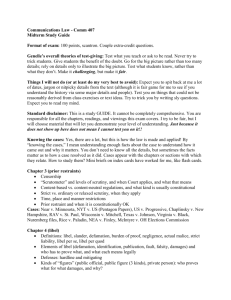
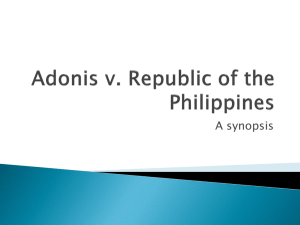
![Think Like an Editor [Spoken libel is slander.] Strategy 31—Libel](http://s2.studylib.net/store/data/015585784_1-4a4df9f403a1d41970830c08b388ca3a-300x300.png)
